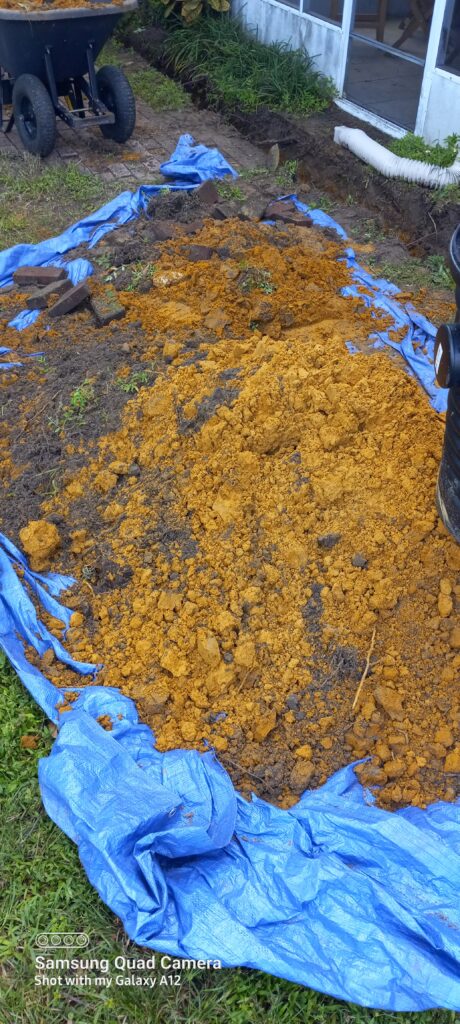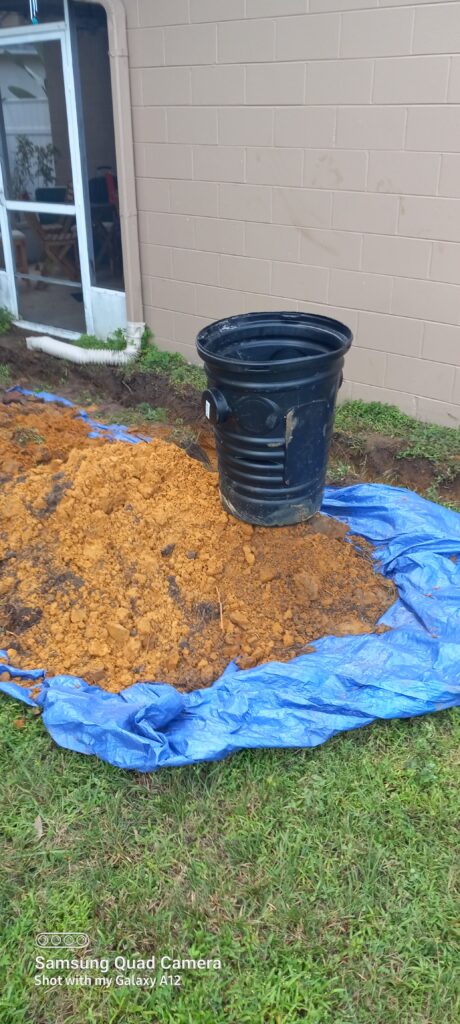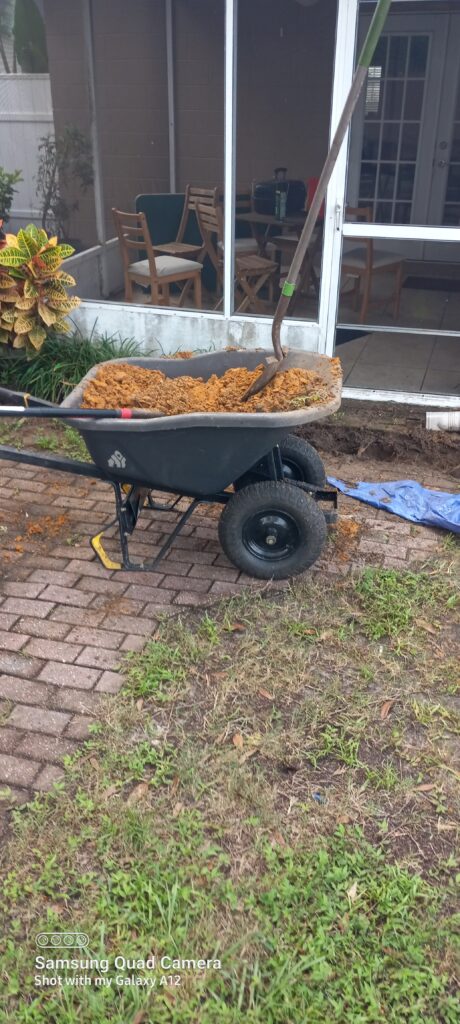
Soil is like a foundation and this is the first part of looking at any issue you might have with your foundation drain. Everything you do to manage plants in your landscape depends on the soil that supports them. Soil, water, and plants work together to create a living system. To find out what kind of soil you have, test the soil in your backyard.
Clay Soil feels smooth and sticky. It forms ribbons when pressed between your fingers. Soils are mixtures of materials and are seldom all one kind or another. Primary Clay Soil, because of its small particles and very tiny pore space, absorbs water at a rate of less than 1/4 inch per hour. Water literally runs off this type of soil. Yet, clay soil can hold large amounts of water when it is absorbed. However, some of the water is held so tightly that plants cannot use it.
Soil Texture Test:
Squeeze a moist (rather than dry or muddy) ball of soil in your hand. Press the soil between your thumb and fingers. You’ll be able to identify one of these textures:
- Clay Soil feels smooth and sticky. It forms ribbons when pressed between your fingers.
- Loam Soil is smooth, slick, partially gritty, and sticky. It forms a ball that crumbles easily.
- Sandy Soil is loose and very gritty. Forming a ball is almost impossible
Conditioning your soil is important for water conservation and good plant growth.
Soils are mixtures of materials and are seldom all one kind or another. An “ideal” soil is 45% minerals (clay, silt, and sand particles; 5% organic matter; and 25% each water and air. Soils are highly variable. Soils in one area will be different from those found in another. Your soil may be different from your neighbor’s. You may even have more than one kind of soil in your own yard. Construction activity often leaves soil that is far different from the original soil. It is usually deficient in organic matter and fertility.

How fast does your soil drink water?
Soils – like people – drink at different rates. Thousands and thousands of gallons of precious and costly water are wasted each growing season by people who apply water faster than soils can absorb it.
Most lawn sprinklers discharge water at a rate of more than 1 inch per hour. Highly compacted, tight soils; soils that are already full of water; or thatched turf cause water to run off. Here is a guide to how quickly different soils absorb water:
- Clay Soil, because of its small particles and very tiny pore space, absorbs water at a rate of less than 1/4 inch per hour. Water, literally runs off this type of soil. Yet, clay soil can hold large amounts of water when it is absorbed. However, some of the water is held so tightly that plants cannot use it.
- Loam Soil is best. A combination of sand, silt, and clay particles, this soil absorbs water readily and is able to store it for use by plants. Loam absorbs water at a rate between 1/4 and 2 inches per hour. Best for your foundation drain.
- Sandy Soil, because it has very large spaces, absorbs water at a rate of more than 2 inches per hour. Water literally flows right through sandy soils and very little is held for plant use.
Well, then, how do I improve my soil so I don’t waste water?

Loosening the soil by rototilling or spading will help. Adding organic material at the same time will keep the soil loose for a healthier lawn. For newly constructed areas, a minimum of 1-inch organic material (3 cubic yards per 1000 square feet) should be tilled into a depth of 6 to 8 inches. Greater amounts may be desired for planting beds.
What type of organic material?
All of the following organic materials will work, some better than others, and some are less expensive than others:
- Compost – leaves, old grass clippings, etc.
- Manure – well-aged, heat-treated, and pulverized
- Aged Sawdust
- Wood Chips – fine-grade chips, nitrolized for decomposition
- Shredded Newspapers – for ornamentals (avoid use in food gardens)
- Sphagnum – peat moss
- Pure Humic Acid – for top dressing existing soil areas
These are only a few foundation drain tips.